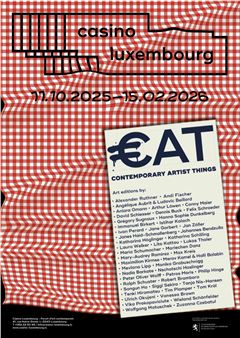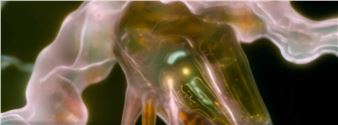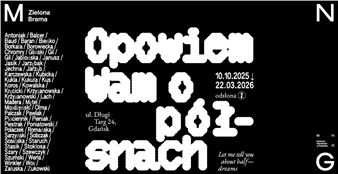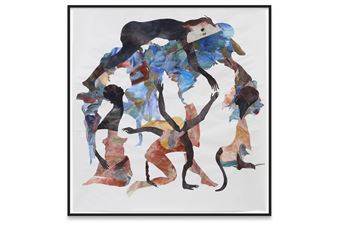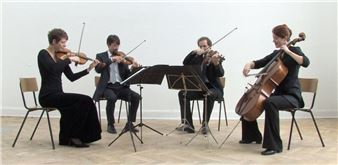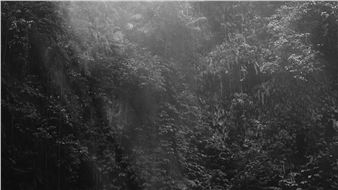Klaus-Martin Treder: Ohne Naheres Ende
Klaus-Martin Treder pours a viscous colour paste over the canvas in a strong basic tone and hermetically envelops it, creating a pictorial body that makes it possible to physically experience colour as a material. Objects figure on the saturated colour, which are applied and draped in a second independent process and complete the transformation of the picture from two- to three-dimensionality. The pictorial action takes place in the constant addition and removal of figurative components. Added to this is the partially painterly treatment of the objects, such as the boxes that have been filled with colour or the sponges that have been soaked in paint.
Even if any style is avoided that is generally regarded as ÔÇ£theÔÇØ expression of the authorÔÇÖs subjectivity, the notion of a certain authorship is mobilised through the objects of everyday life. Indeed, one involuntarily wonders to what extent the objects can perhaps be read autobiographically ÔÇô in the sense of a self-portrait? And if not in relation to the artist, then perhaps to another person? The result is an open, unconfirmed mutual attribution of meaning between product and persona, which extends into economic reflections on the things we consume, because what we consume says something about us and society.
The complex question of what form painting can take today in the face of artistic and economic influences is negotiated in Klaus-Martin TrederÔÇÖs exhibited works towards an option that, not without eccentricity, is conceived from the material in a social resonance space.

Recommended for you
Klaus-Martin Treder pours a viscous colour paste over the canvas in a strong basic tone and hermetically envelops it, creating a pictorial body that makes it possible to physically experience colour as a material. Objects figure on the saturated colour, which are applied and draped in a second independent process and complete the transformation of the picture from two- to three-dimensionality. The pictorial action takes place in the constant addition and removal of figurative components. Added to this is the partially painterly treatment of the objects, such as the boxes that have been filled with colour or the sponges that have been soaked in paint.
Even if any style is avoided that is generally regarded as ÔÇ£theÔÇØ expression of the authorÔÇÖs subjectivity, the notion of a certain authorship is mobilised through the objects of everyday life. Indeed, one involuntarily wonders to what extent the objects can perhaps be read autobiographically ÔÇô in the sense of a self-portrait? And if not in relation to the artist, then perhaps to another person? The result is an open, unconfirmed mutual attribution of meaning between product and persona, which extends into economic reflections on the things we consume, because what we consume says something about us and society.
The complex question of what form painting can take today in the face of artistic and economic influences is negotiated in Klaus-Martin TrederÔÇÖs exhibited works towards an option that, not without eccentricity, is conceived from the material in a social resonance space.
Artists on show
Contact details


 ARTISTS
ARTISTS








